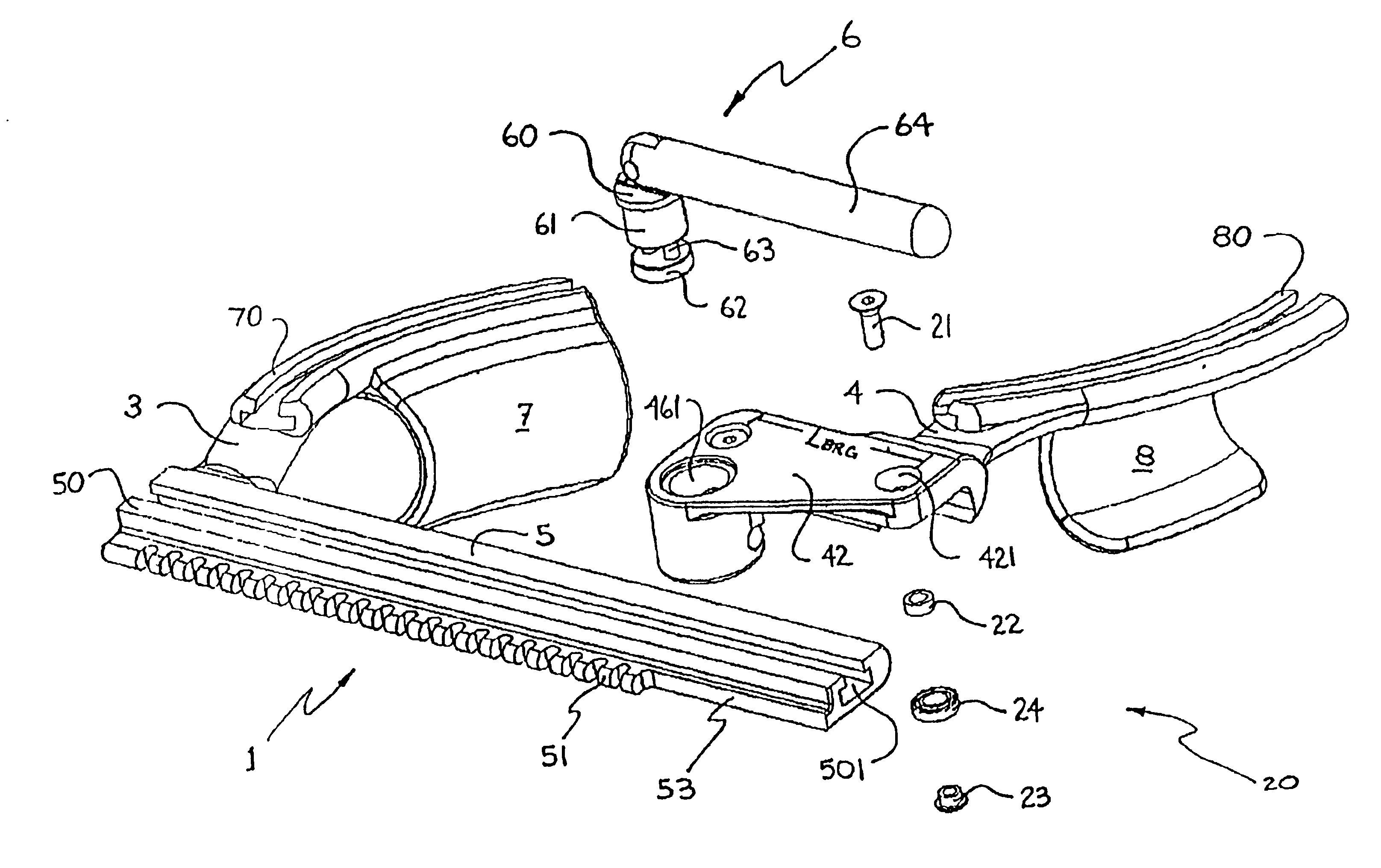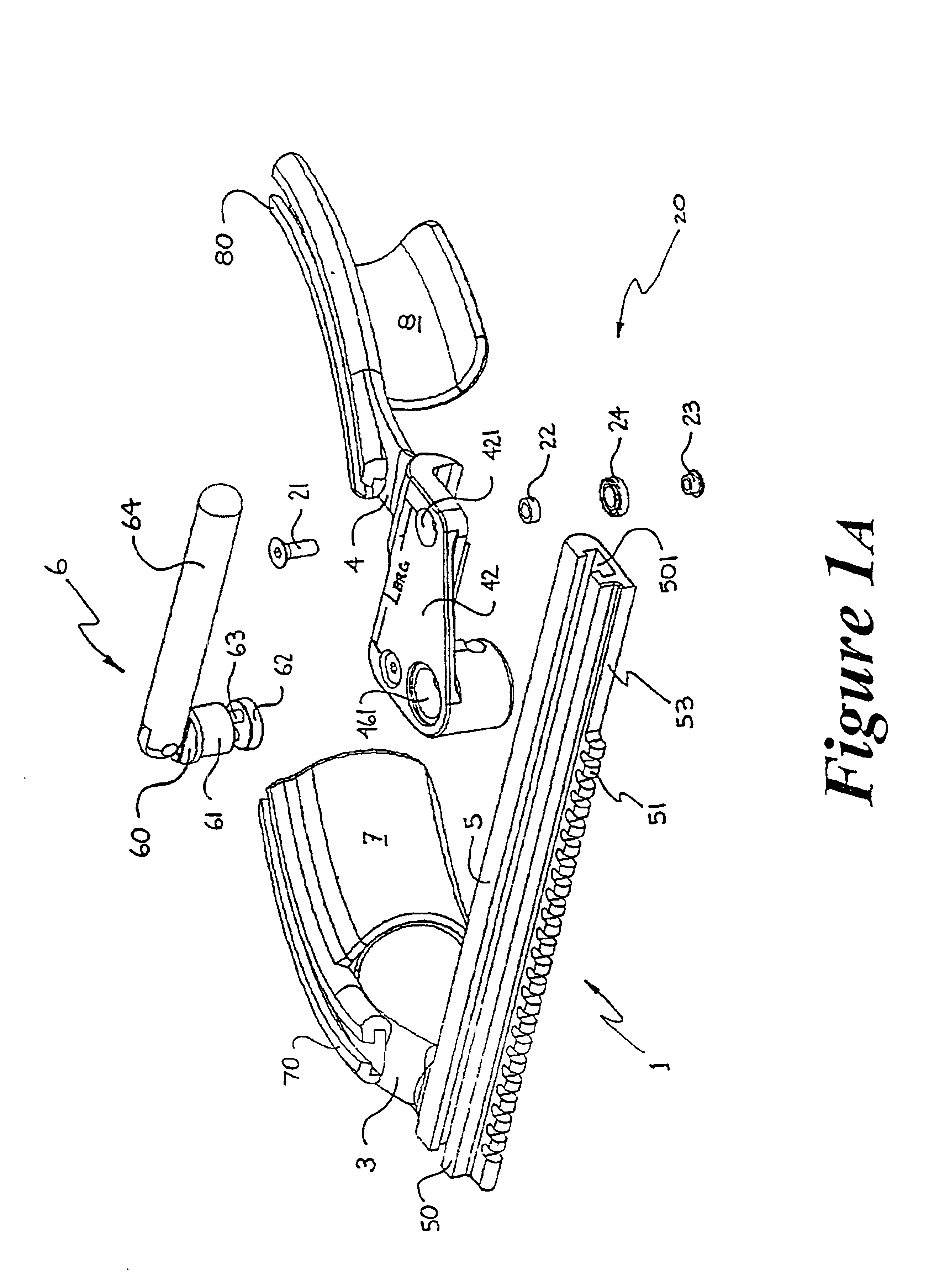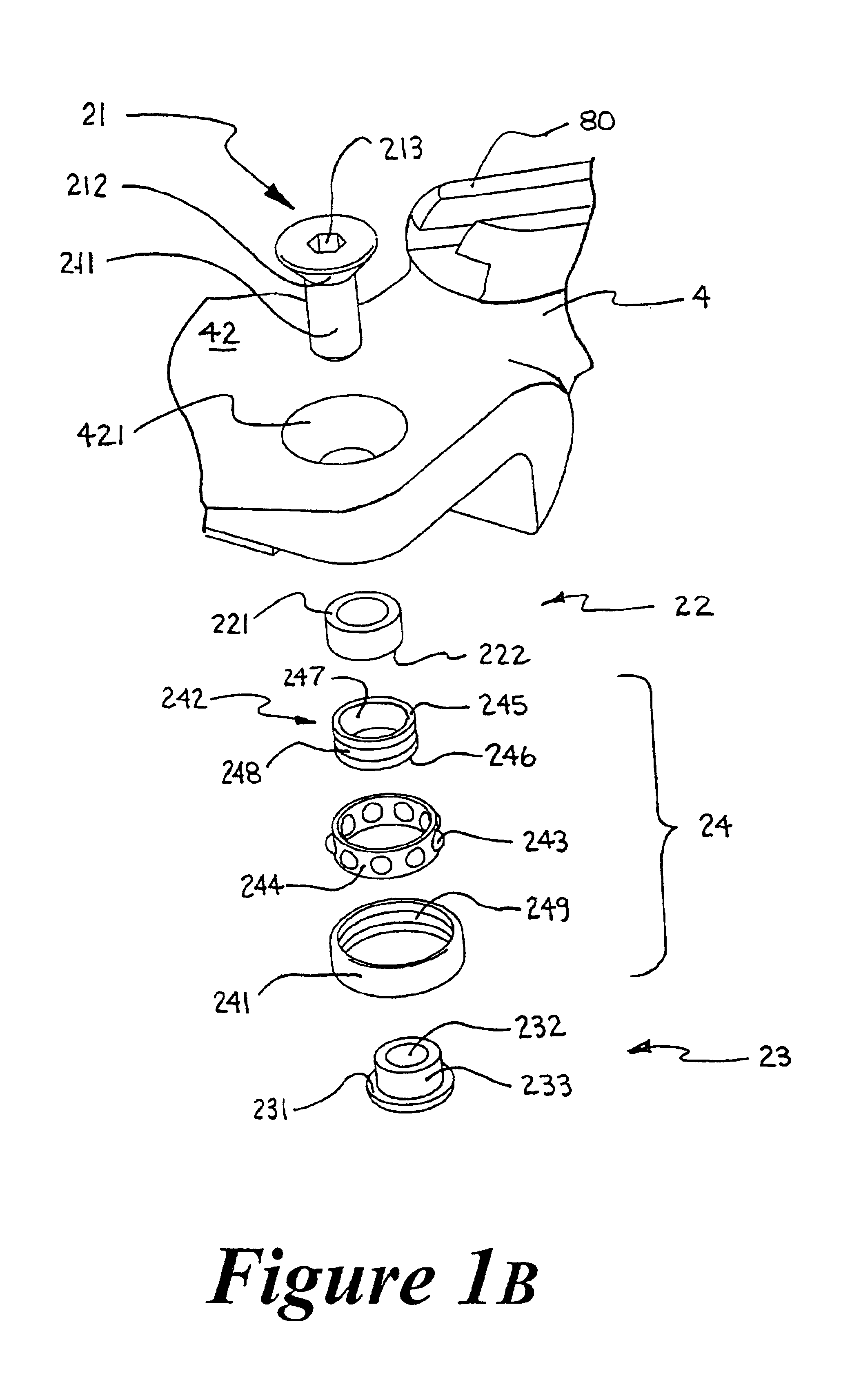Surgical retractor having low-friction actuating means and contoured blade arms
a technology of actuating means and blade arms, which is applied in the field of surgical retractors, can solve the problems of high friction in the retractor system, concentrated load generation, and separation force to overcome the resistance load of the retractor, and achieves the effects of reducing separation force and torque, facilitating its deployment, and more uniform load
- Summary
- Abstract
- Description
- Claims
- Application Information
AI Technical Summary
Benefits of technology
Problems solved by technology
Method used
Image
Examples
first embodiment
[0099]Although the first embodiment, as illustrated in FIG. 1A, 1B and 3, employs an open configuration ball bearing 24 as part of the load-reducing and load-normalizing mechanism 20, other rolling-element-type bearings can also be employed to configure alternative embodiments for the load-reducing and load-normalizing mechanism. FIGS. 4A to 41 illustrate the top cross-sectional half of rolling-element-type bearing variants, about their respective centerlines CL. Suitable bearings may include but are not limited to: (4A) open configuration ball bearing (also the illustrated example in FIG. 1A); (4B) shielded ball bearing; (4C) sealed ball bearing; (4D) external self-aligning ball bearing; (4E) double row ball bearing; (4F) self-aligning ball bearing; (4G) straight roller bearing; (4H) needle bearing; and (4I) tapered roller bearing. In these figures, the bearing outer race is generically referred to as OR, the inner race as IR, and the complement of rolling elements as RE. FIG. 4J i...
third embodiment
[0114]In this third embodiment, feature 423 covered by sliding member 25 forms a T-shaped key which slides within a T-shaped keyseat slot 501 in the rack bar 5. Other variations of key and keyslot geometry are possible which do not depart from the spirit of this invention, such as: L-shape, dovetail, firtree and others apparent to those skilled in this art.
fourth embodiment
[0115]FIG. 8 illustrates a fourth embodiment according to the present invention. In order to reduce the friction force FPINION, and consequently the force FSURGEON and torque MSURGEON the surgeon must apply at the crank handle 641, a friction-reducing member 631 is introduced as part of the pinion mechanism 16.
[0116]In a first configuration of this fourth embodiment, feature 631 is a substantially cylindrical sleeve which is press-fit (interference fit) onto pinion member 632. With the rotation of the crank 641, the outer surface of sleeve feature 631 rotates as it slides relative to the rack tooth 511 surface. The material of the sleeve is either teflon, plastic, polymer, or any other material well-suited to provide substantially frictionless movement of the pinion relative to the rack. The sleeve tends not only to reduce friction between the pinion member 632 and the rack tooth 511, but also to reduce the wear at this interface. In most prior art retractors, the pinion member and ...
PUM
 Login to View More
Login to View More Abstract
Description
Claims
Application Information
 Login to View More
Login to View More - R&D
- Intellectual Property
- Life Sciences
- Materials
- Tech Scout
- Unparalleled Data Quality
- Higher Quality Content
- 60% Fewer Hallucinations
Browse by: Latest US Patents, China's latest patents, Technical Efficacy Thesaurus, Application Domain, Technology Topic, Popular Technical Reports.
© 2025 PatSnap. All rights reserved.Legal|Privacy policy|Modern Slavery Act Transparency Statement|Sitemap|About US| Contact US: help@patsnap.com



